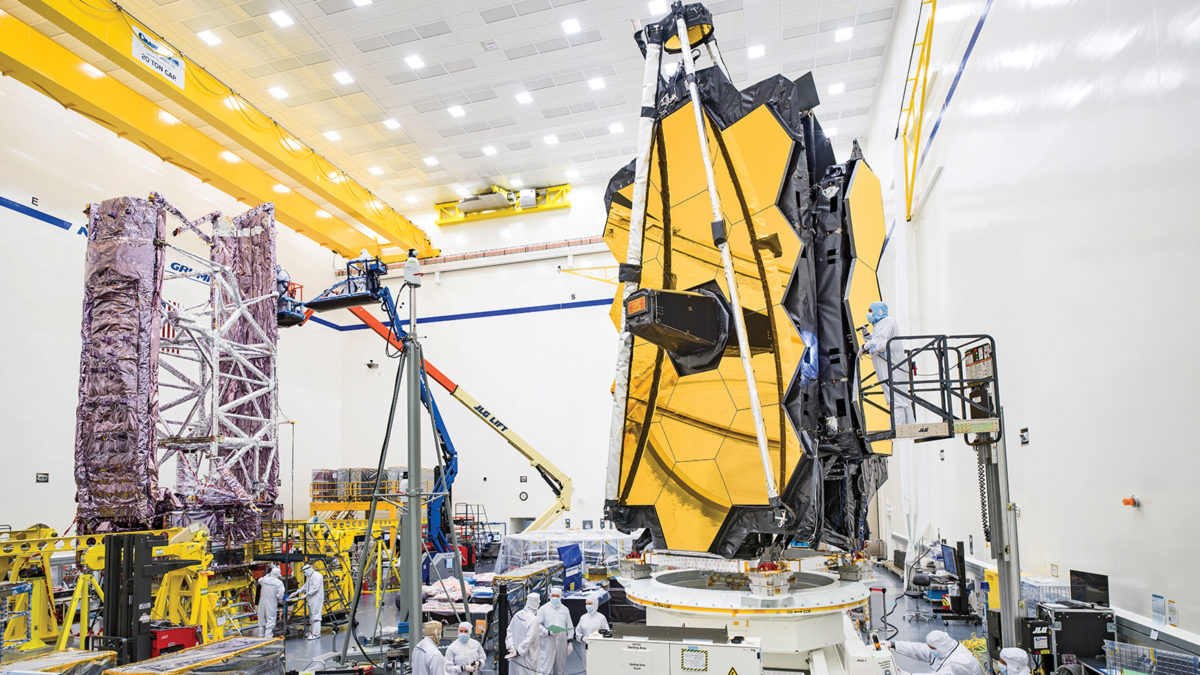Webb telescope poised for “final integration”
By Amanda Miller|June 2019
To this point, NASA and Northrop Grumman have steered the massive James Webb Space Telescope through development in two halves. Engineers had to do that, partly because in space the two halves must function at opposite temperature extremes. No facility could replicate near absolute zero on one side of the spacecraft and sunlight on the other.
A big moment for Webb will come in the weeks ahead when, depending on results of thermal tests, Northrop Grumman joins the optical half, including the honeycomb primary mirror, to the spacecraft element. The yellow bar on the ceiling of the company’s Redondo Beach, California, facility will lift the optics, called OTIS for Optical Telescope and Integrated Science instrument module, precisely into position. Technicians and engineers will then bolt OTIS to the spacecraft element and connect numerous power wires, cryocooler lines and data cables in a final integration process that should take about 11 hours, followed by lots of testing.
Folded up inside the spacecraft element is a tennis-court-sized sunshield consisting of five layers of polymer that will open to block solar radiation and chill anything on the other side to nearly absolute zero. Keeping the optics cold will empower Webb to detect infrared light from the early universe, once the three petals of its 6.5-meter primary mirror come together in space.
Smooth integration of those halves would mark a rebound from a test failure last March. Hardware bolting together the sunshield fell out during a high-decibel noise test that mimicked the roar that Webb will face as its Ariane 5 rocket lifts off and accelerates toward space. That issue and other setbacks caused NASA to slip the launch from January 2020 to March 2021.
Bolting the sunshield was tricky due to the need to protect the sunshield layers, the thinnest of which are 0.03-millimeter thick, from risk of tearing.
“One thing about Webb I try to emphasize all of the time is that everything we do is a first,” says Scott Willoughby, Northrop Grumman’s Webb program manager.
The fix to the bolt problem worked as planned during a repeat of the high-decibel testing late last year, and during vibration testing early this year.
The bolt problem and other issues added $800 million to Webb’s price tag, bringing the estimated total mission cost, since design and development began in 1996, to $9.7 billion.
Once Webb is fully assembled and ready for launch, it’ll be laid down horizontally in a container for shipping through the Panama Canal to the Guiana Space Center in Kourou, French Guiana.








